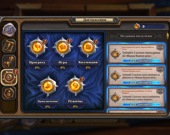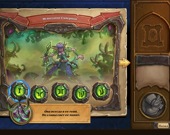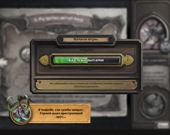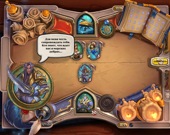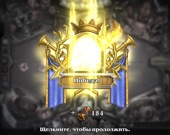Hearthstone Game Review
Collectible card games (CCGs) are one of the most popular genres today, including in the free-to-play format. And at the origins of this popularity was Hearthstone, developed based on the Warcraft universe and released by Blizzard Entertainment in 2014. This was the impetus behind freetuple KKIs sprinkled from the horn of plenty, including other popular game worlds like The Elder Scrolls and League of Legends. But no one has been able to fully replicate the success of Hearthstone, and some projects have long since closed. But the brainchild of Blizzard still remains popular. So what is the secret of Hearthstone's success?
About heroes and card mechanics
Naturally, the popularity of Hearthstone is largely due to the fact that it is a game in the Warcraft universe. There are a lot of familiar characters here. Jaina Proudmoore, Thrall, Garrosh, Uther, Malfurion, Illidan, Alduin and others - you can learn some new details about each of them and experience new adventures with them. But they fight not on swords and magic staffs in three-dimensional action, MMORPG or strategy, but in card duels.
Here all attacking and defensive techniques, as well as the call of units are played with the help of cards, which are included in the decks prepared by you or the game itself. The task is to deal damage to the enemy hero and reduce his health level to zero. After using all the "mana" for their actions, the turn is passed to the opponent.
Cards, of course, differ in their cost, rarity (from common to legendary) and properties.
Here all attacking and defensive techniques, as well as the call of units are played with the help of cards, which are included in the decks prepared by you or the game itself. The task is to deal damage to the enemy hero and reduce his health level to zero. After using all the "mana" for their actions, the turn is passed to the opponent.
Cards, of course, differ in their cost, rarity (from common to legendary) and properties.

Normally everyone attacks only on the next turn after being played, but cards with the "Onslaught" property can do so immediately. The "Battle Cry" property allows you to apply an effect like healing a hero/unit, increasing its armor, or dealing damage to all opponents immediately after entering the field. "Death Rattle" activates such effects after the unit's death, and fighters with the "Provocation" property protect the hero and force them to attack those cards first.
There are hundreds of nuances, especially considering that in addition to the common cards there are those that can only apply heroes of certain classes. Now in Hearthstone there are 10 classes, moved here from World of Warcraft: The Burning Crusade - Warrior, Mage, Death Knight, Druid, Priest, Pathfinder, Hunter, Paladin, Bandit, Witchfinder, Shaman. And for each class can be different heroes. For example, a demon hunter can be not only Illiad, but also Aranna the Stargazer.
There are hundreds of nuances, especially considering that in addition to the common cards there are those that can only apply heroes of certain classes. Now in Hearthstone there are 10 classes, moved here from World of Warcraft: The Burning Crusade - Warrior, Mage, Death Knight, Druid, Priest, Pathfinder, Hunter, Paladin, Bandit, Witchfinder, Shaman. And for each class can be different heroes. For example, a demon hunter can be not only Illiad, but also Aranna the Stargazer.
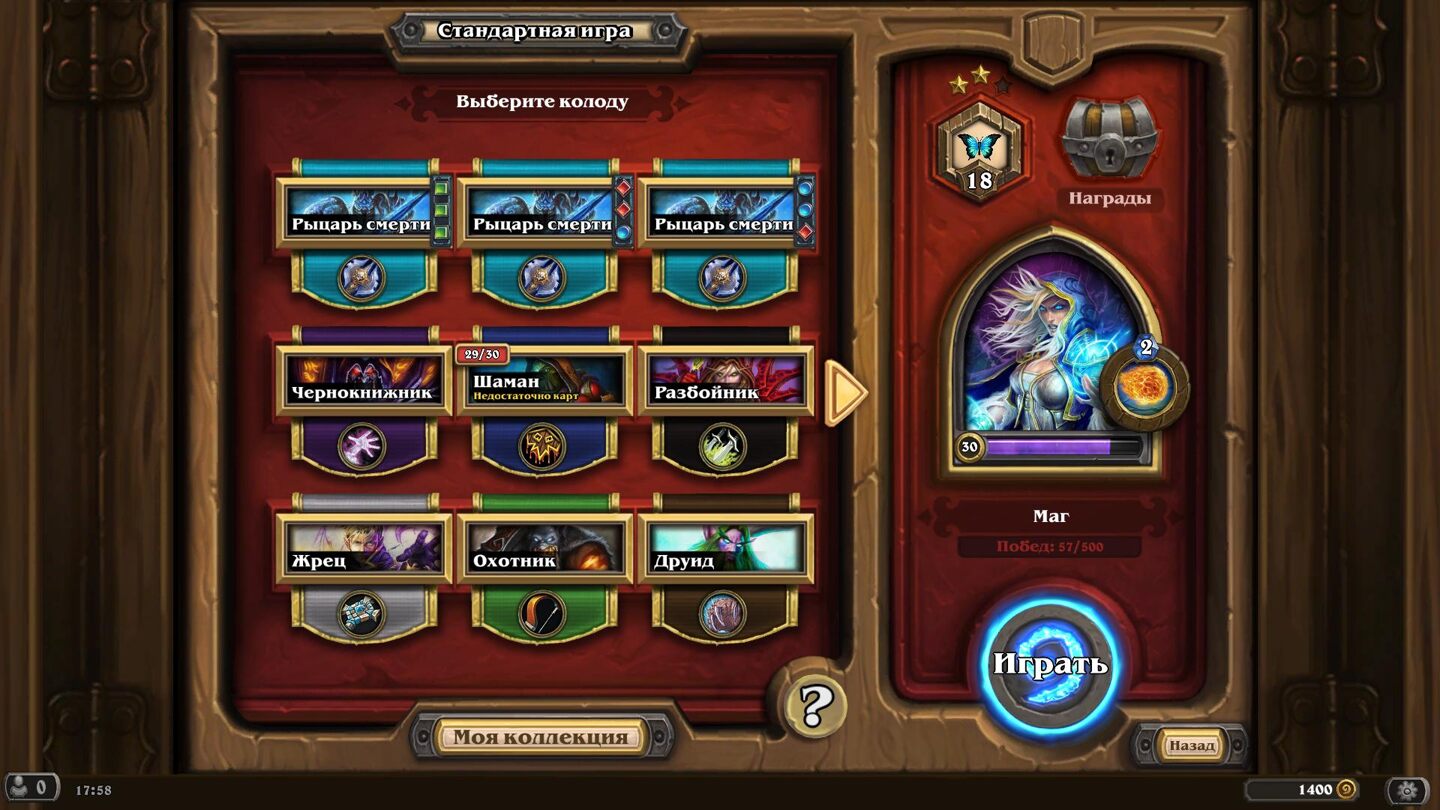
In any case, each class has its own tactics. For example, the magician Jaina naturally relies on various elemental spells and especially loves to hit and freeze several enemies at once. And her unique ability allows her to deal fire damage to any unit or hero. The Warrior summons a variety of units and constantly builds up her armor. The Hunter relies on summoning various beasts, the Priest is able to heal himself and his allies. The Shaman summons totems, which at the end of the turn give various bonuses. And the Death Knight constantly accumulates a unique resource - corpses, which remain after the death of his fighters to use special techniques and increase the effectiveness of cards.
The player's task is to study the pros and cons of the chosen class and intelligently select a deck in accordance with his tactics. You can bet on summoning small, but biting monsters like murlocs, which are cheap and take their abundance. Or on the use of ice spells, on the casting of secrets - these are cards that are triggered by certain actions, so the opponent does not see their properties. There are many variants, and profile resources regularly publish relevant guides, tops and ratings of various tactics and decks - you can use them as a reference when making your own, when you add or remove some cards. By the way, the deck size is limited - usually 30, rarely 40 cards.
The player's task is to study the pros and cons of the chosen class and intelligently select a deck in accordance with his tactics. You can bet on summoning small, but biting monsters like murlocs, which are cheap and take their abundance. Or on the use of ice spells, on the casting of secrets - these are cards that are triggered by certain actions, so the opponent does not see their properties. There are many variants, and profile resources regularly publish relevant guides, tops and ratings of various tactics and decks - you can use them as a reference when making your own, when you add or remove some cards. By the way, the deck size is limited - usually 30, rarely 40 cards.
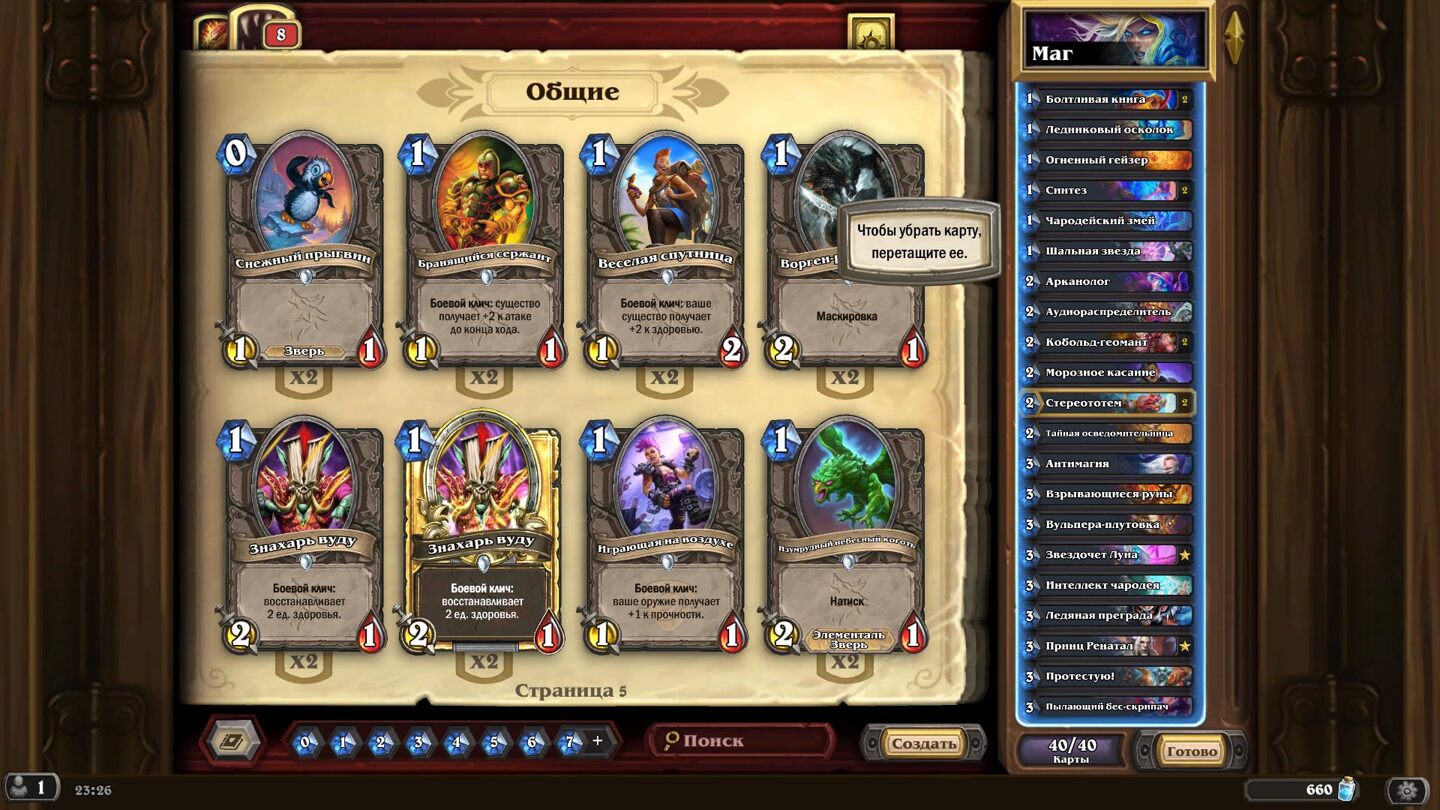
Naturally, not all of the existing cards in the game are immediately available. Many of them are rewarded, but the rarest and most legendary ones often have to be created with the help of the crafting system. The special resource "sorcerer's dust" is used to create them, and we sometimes get it as a reward, but mostly we accumulate it by recycling unnecessary cards.
About the game modes
The abundance of interesting modes is one of the main distinguishing features of Hearthstone. Even the usual training with bots is extremely useful here - only by winning and unlocking representatives of all classes, you will open some other modes. The most classic mode is called Hearthstone - here we fight with other users in normal, friendly or ranked matches. At the end of each month your ranking is calculated and rewards are given.
In the "Arena" mode we fight with other players not with our own deck, but form it from the cards offered by the game itself. First you have to choose one of three randomly offered classes, and then form a deck, each time choosing from three random cards. After several defeats, the game ends.
In the "Arena" mode we fight with other players not with our own deck, but form it from the cards offered by the game itself. First you have to choose one of three randomly offered classes, and then form a deck, each time choosing from three random cards. After several defeats, the game ends.
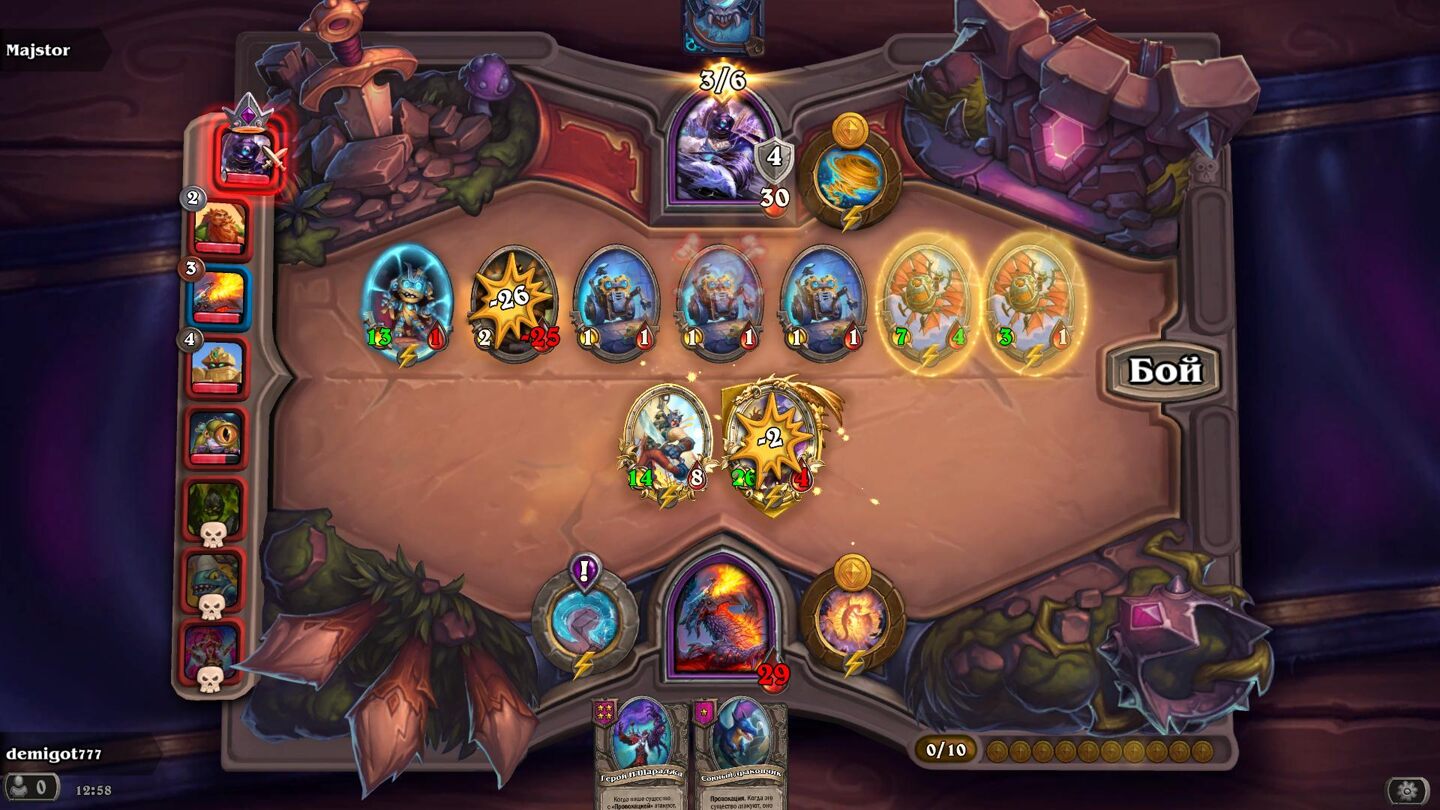
Another PvP mode is "Scuffle", which takes place at a certain time and according to special rules. Sometimes you can use cards from your own collection, and sometimes the rules suggest that the game itself will offer you sometimes quite unexpected and even humorous deck variants. For example, in Fishing, a deck of 30 creatures and 10 class spells is filled with a fishing rod that can be used to fish units out of another player's hand.
In Confrontation, the rules change even more dramatically. In fact, it's a different game. Eight people compete in a round robin system. Each of them in turn buys and puts on the field unique cards of units, which in the main Hearthstone at all do not exist. Initially they are all low level, but you can upgrade the tavern where they are hired, and then cooler units become available. Then the units themselves attack each other, and the strength of the survivors is added up and determines how much damage you inflict on the enemy hero. If you buy the same fighters, then three such cards add up to one more powerful one. True, the composition of available units for hire each round is determined randomly, and not always fall out the right ones. You can update the list, but it costs money. As a result, we have a somewhat different, but still interesting game.
In Confrontation, the rules change even more dramatically. In fact, it's a different game. Eight people compete in a round robin system. Each of them in turn buys and puts on the field unique cards of units, which in the main Hearthstone at all do not exist. Initially they are all low level, but you can upgrade the tavern where they are hired, and then cooler units become available. Then the units themselves attack each other, and the strength of the survivors is added up and determines how much damage you inflict on the enemy hero. If you buy the same fighters, then three such cards add up to one more powerful one. True, the composition of available units for hire each round is determined randomly, and not always fall out the right ones. You can update the list, but it costs money. As a result, we have a somewhat different, but still interesting game.

Finally, one of the most interesting modes is "Adventure". Here we compete with computer bots. The mode fully justifies its name - the heroes known from the Warcraft universe go on new adventures, and we learn new details about them. Thus, you will learn how Jaina Proudmoore was first an ally and then an enemy of Thrall, how Prince Arthas turned into a death knight, why Garrosh, who was not loved in his clan, gradually swallowed by darkness and how Illiad became a hunter of demons, himself flattered by their power.
The adventures are many, they are divided into a prologue, the main part consisting of different chapters, and special challenges that will become available after unlocking all classes in "training". And the most important thing is that in this mode almost always change the rules, and maps, and even the abilities of the heroes. For example, when we as Jaina defend our hometown from the Horde attack, we default to the gate cards, which themselves do not attack anyone, but are very well protected.
The adventures are many, they are divided into a prologue, the main part consisting of different chapters, and special challenges that will become available after unlocking all classes in "training". And the most important thing is that in this mode almost always change the rules, and maps, and even the abilities of the heroes. For example, when we as Jaina defend our hometown from the Horde attack, we default to the gate cards, which themselves do not attack anyone, but are very well protected.

And instead of the fireballs she throws in her classic version, Jaina freezes several enemies at once. In the next chapter we get new unique cards and conditions, and the sorceress gets the ability to summon ice elementals. And so it always is - you never know what awaits you in the next adventure or even the next chapter.
How it's played
Of course, sometimes the game is criticized - mainly for the factor of randomness, randomness when cards fall out, but this is somehow a feature of all KKIs of this type. Besides, proper deck building minimizes the randomness factor.
Otherwise, everything here is done almost perfectly. In addition to the abundance of various adventures, modes and Warcraftian heroes Hearthstone also attracts a balanced gameplay. All heroes and cards are very carefully and competently calibrated here, and therefore there are almost no outright imbovye, that is, disproportionately strong decks and tactics, against which almost nothing can be done. Throughout the game's existence, the authors are constantly adjusting the balance, introducing new cards (of recent ones are the Titans cards), "nerfing" something (that is, lowering the strength), something, on the contrary, making it stronger and so on. They also add new heroes and even classes. So, the Death Knight appeared relatively recently and many have already managed to like. Interestingly, there are as many as three specializations of this class.
Otherwise, everything here is done almost perfectly. In addition to the abundance of various adventures, modes and Warcraftian heroes Hearthstone also attracts a balanced gameplay. All heroes and cards are very carefully and competently calibrated here, and therefore there are almost no outright imbovye, that is, disproportionately strong decks and tactics, against which almost nothing can be done. Throughout the game's existence, the authors are constantly adjusting the balance, introducing new cards (of recent ones are the Titans cards), "nerfing" something (that is, lowering the strength), something, on the contrary, making it stronger and so on. They also add new heroes and even classes. So, the Death Knight appeared relatively recently and many have already managed to like. Interestingly, there are as many as three specializations of this class.
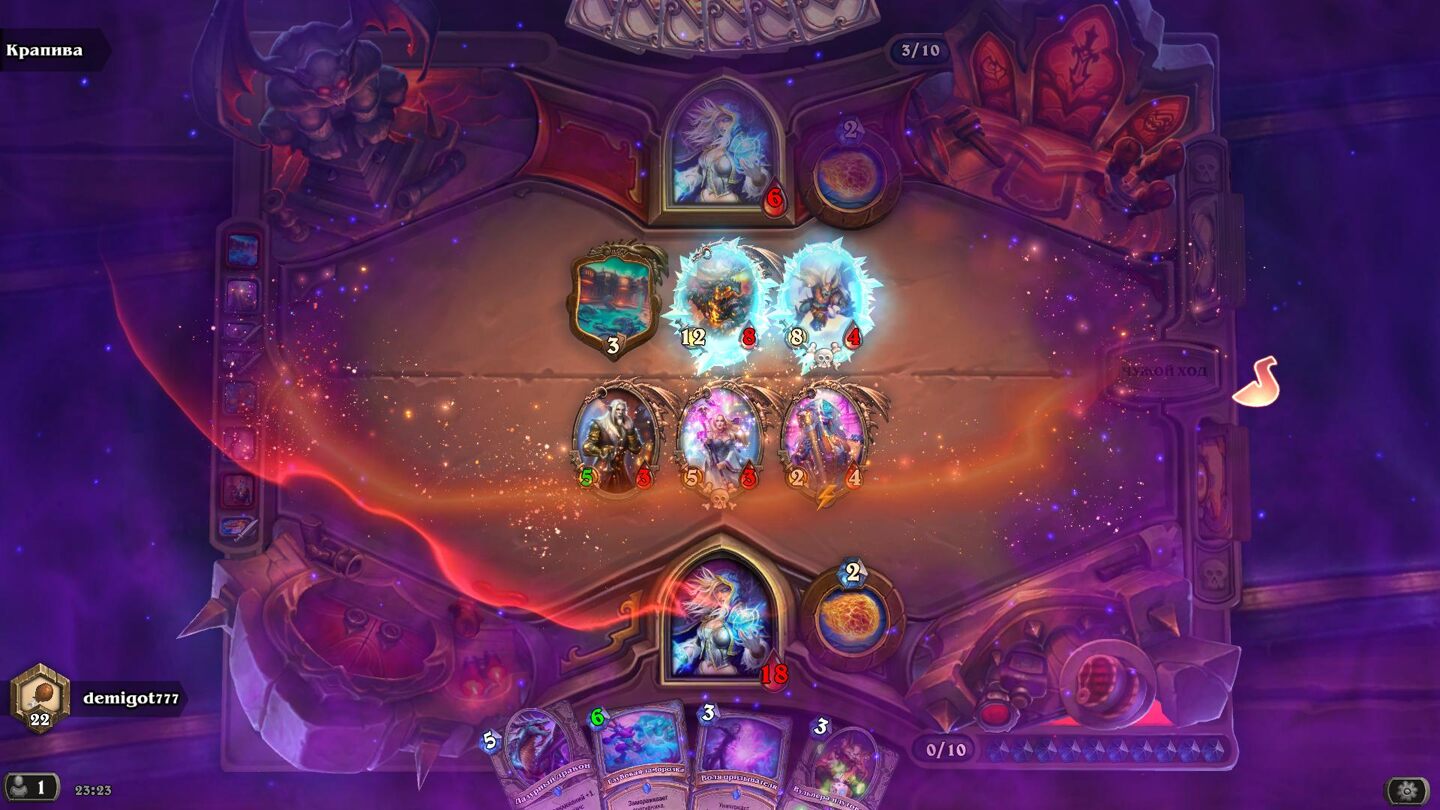
We should also note how gorgeous the game looks and sounds. And there is an expressive voiceover in Russian. And the music only emphasizes the atmosphere of warm lamp adventure. Well, and, of course, Blizzard's trademark attention to details is in place. For example, during the match you can click on the elements of the environment and see how candles go out and light up, how the ice breaks or even how guns shoot. As they say, it's a small thing, but it's nice.
Finally, the game has never been characterized by some inadequate hard donation. There is a built-in store, where you can buy sets with cool cards and warlock dust for your blood money. There is also a battle pass and some other features of conditionally free games.
But in Hearthstone there is always an opportunity to earn currency, the same dust and various sets of cards in-game ways - for winning matches, accomplishing achievements, getting new ranks and so on. Yes, if you want to be at the top of the rankings, you'll probably have to pay for something one way or another (though not for sure). But Hearthstone is different in that it is universal - it is equally interesting to reach the top of the rankings, and just relax in the evening after work for a couple of matches.
Finally, the game has never been characterized by some inadequate hard donation. There is a built-in store, where you can buy sets with cool cards and warlock dust for your blood money. There is also a battle pass and some other features of conditionally free games.
But in Hearthstone there is always an opportunity to earn currency, the same dust and various sets of cards in-game ways - for winning matches, accomplishing achievements, getting new ranks and so on. Yes, if you want to be at the top of the rankings, you'll probably have to pay for something one way or another (though not for sure). But Hearthstone is different in that it is universal - it is equally interesting to reach the top of the rankings, and just relax in the evening after work for a couple of matches.
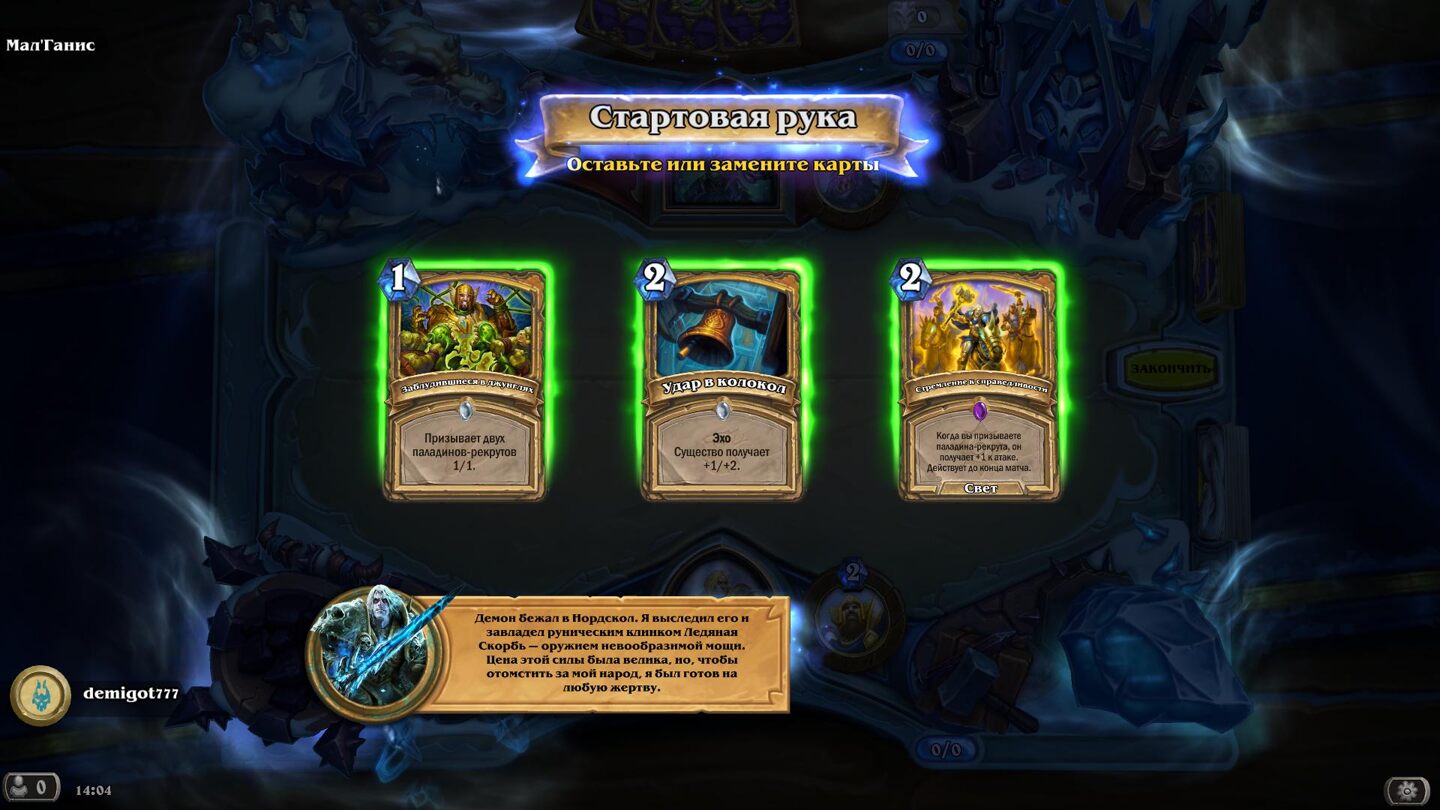
Conclusion
Hearthstone is indeed still hardly the best freetuple KKI that strikes the perfect balance between difficulty and accessibility. And at the same time it offers a lot of adventures, modes, maps and characters familiar from the Warcraft universe. And also it still constantly pleases with different events, festivals and tournaments - it is also a powerful cybersport game, which annually holds world championships with hundreds of thousands of dollars in prize money.
Zarium. August 2023
Zarium. August 2023

